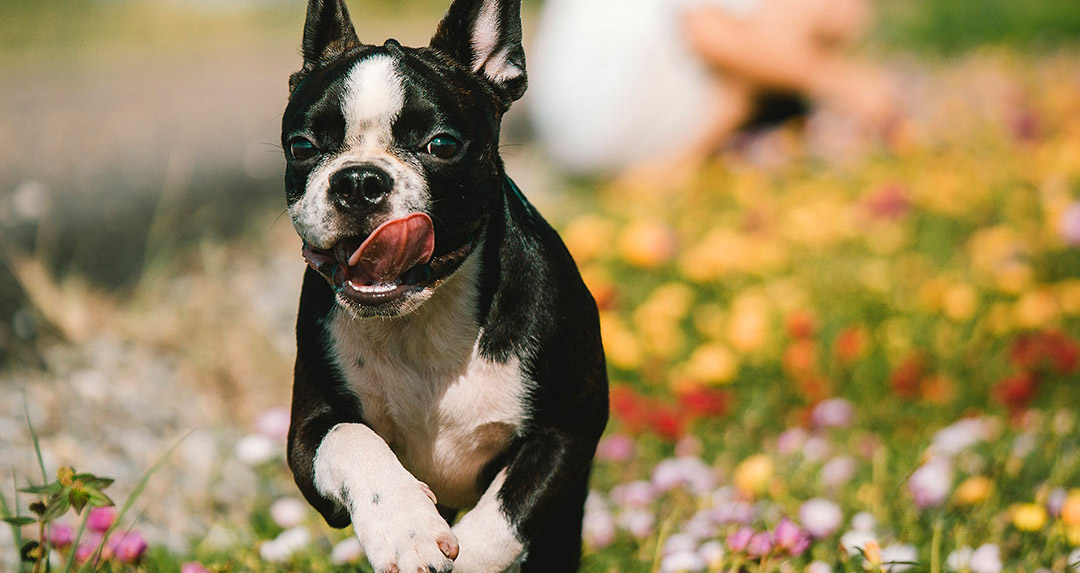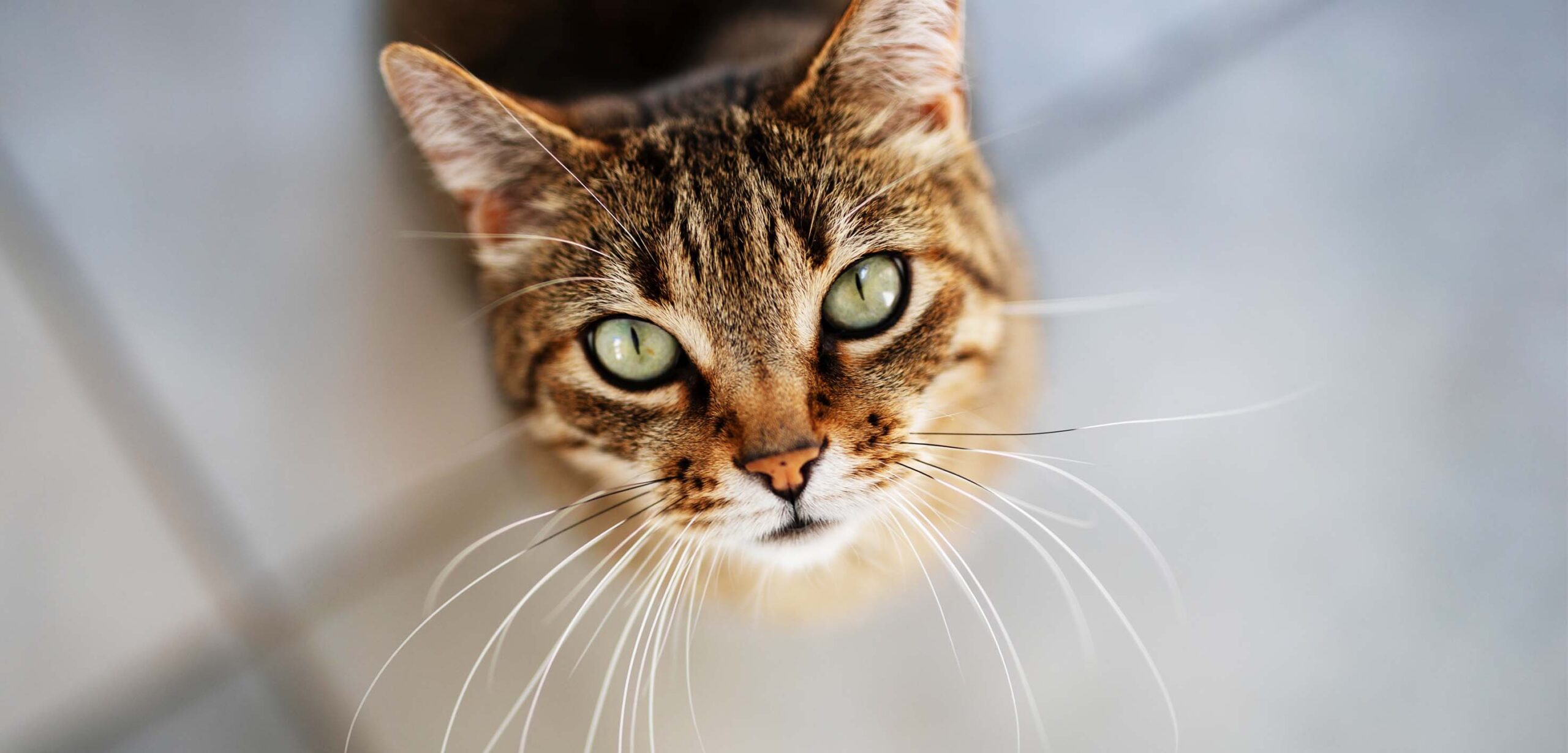When the topic of mental health is broached, anxiety gets the lion’s share of attention from pet parents, trainers, and the veterinary profession. It isn’t surprising since it’s a problem to be fixed– we want to manage unwanted behaviors like destructive redecorating, incessant barking, aggression, and, most importantly, ease four-leggers’ stress and anxiety.
But when it comes to mental health, anxiety is just one piece of a complex puzzle that is dog. Your dog is also a skilled communicator. Some dogs may be louder (*cough* huskies), but all are telling us that these relationships– us and them– aren’t one-sided.
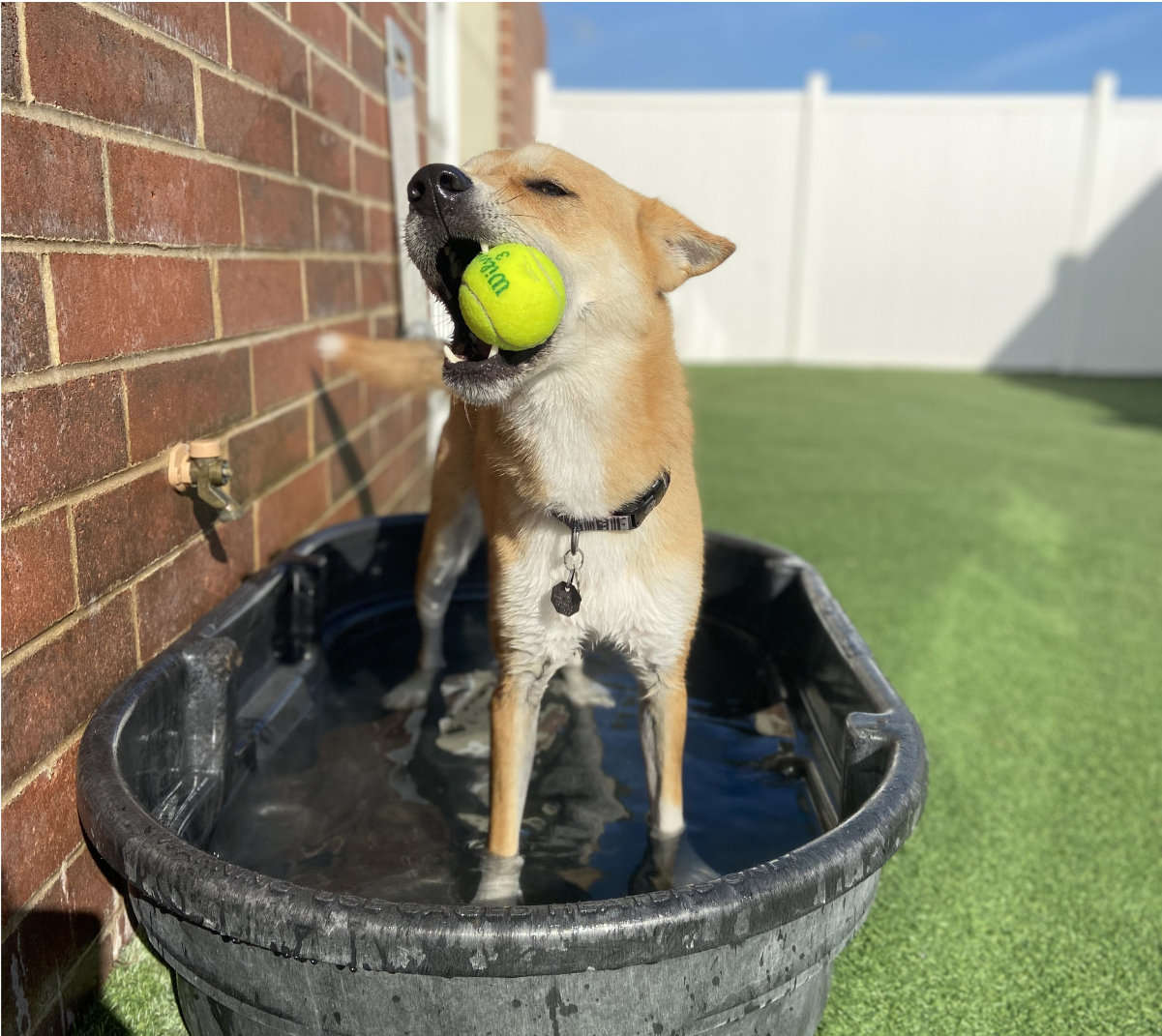
Photo of this writer’s skilled communicator – Duck
Your dog’s saying what they want and need from you. All you have to do is listen. With your eyes. Stick with us…
If we actively try to be more aware of behavior, pick up on their cues, we could do so much more for our pets.
As mental health awareness month kicks off, what better time to rally pet lovers towards this movement of awareness. There are already these massive and profound conversations happening around our pet’s mental health and well-being, and we want you to join in.
On The Agenda
Mental Health from Puppyhood to Senior
Early development, continued education (!), the aging brain– a dog’s needs change at each stage of their life. And there are such easy things you can do, choices you can make that’ll have substantial effects on their mental and emotional well-being.
Developmental Brain Health

Let’s start in puppyhood. A key component to a puppy’s brain development is DHA– an Omega 3 gotten through diet. It’s an essential fatty acid responsible for the growth and functional development of the brain and even improves their learning. These Omega 3s need to be in every pet’s bowl, but the sooner you can add them in, the better for your pup.
Alongside DHA, one of the keys to mental development in kittens and puppies is early socialization. It’s this small window in their lives when they are most open to learning about their environment, their littermates, mother, fellow four-leggers, and two-leggers.
If this socialization period is filled with diverse experiences– car rides, new places, faces, and smells, lots of belly rubs by a variety of hands, and positive interactions– playdates, treats, praise, more belly rubs, and butt scratches, then they’ll be more sociable as an adult. And this one’s big– it can even prevent fearful responses, which lead to those behavioral issues mentioned earlier.
For all of you rescuers of the middle-aged, seniors, even youngins, now isn’t the time to stress. While early socialization does play a significant role in a dog and cat’s mental development, you can (read should) still flex their brain muscle with continued education.
Continued Education
Puzzle toys, snuffle mats, tug– each game offers invaluable enrichment for a four-legger’s mental and emotional health no matter their age. I repeat, NO MATTER their age.
Puzzle toys sharpen problem-solving skills, snuffle mats mimic foraging and stimulate their sniffer, tug is bonding time between them and you. Each type of play offers its own form of enrichment that gets your pup’s gears grinding.
All of these forms of mental stimulation work on many levels as a stress relief technique, too. When they’re using their brain to problem solve, that mental stimulation can offer stress relief.
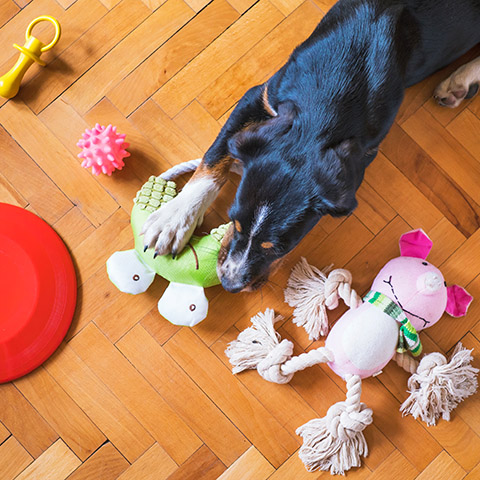
Games also offer a distraction from what may have caused them stress in the first place. Stress (or frustration) can also come from boredom, so brain games, teaching a new trick (just keep it to short 20 min sessions), or other types of play can have the same calming effects as fetch or frisbee does on a pent-up pup.
The variety of play is crucial too. If you just stick to a physical activity like fetch, there’s this snowball effect. You’re building up their stamina week after week – we’re talking Olympic qualifiers– meaning they need more and more to be placated.
Aging and its Effects on the Brain

Your dog’s needs are going to change. As they age, it’s not just more naps (though they’re great, too) or fewer rounds of fetch; their brains change too, and their cognitive function can decline.
It’s not unlike what humans with dementia go through– forgetfulness, disorientation, and confusion. Older animals also have too high of serotonin levels. While serotonin is generally thought of as a mood regulator in a positive way, too high of levels are shown to induce anxiety. So a dementia dog isn’t only struggling with those chemical changes in the brain but those feelings of confusion and disorientation, too, fueling more worry and anxiety.
While we can’t stop aging (yet), research shows that there is so much we can do, right this minute even, to feed the mind. You can nourish the brain with nutraceuticals to protect and support cognitive function, change the diet, and use continued education like those brain games for enrichment and stimulation.
Even if your dog isn’t a senior, you want to nourish their brain proactively– starting around the last third of their life. Be aware of your dog’s behavior, their mood. If you start to notice changes in your pup or they’re beginning to show signs of doggie dementia, they’re going to need their person advocating for their best interest– curating their bowl as they change.
Emotional Disorders & Mental Health Issues
Dogs hide between legs to avoid dog park bullies. Others actually piddle with excitement when they see you. My dog claims rites over all stuffies in the office, whether they’re his or not. They’re full-up on emotions, so is it really that much of a stretch to think that they may suffer from some of the same emotional disorders that we do as well?
Those at the forefront of psychological research have already shown that dogs and cats can suffer from PTSD, OCD, and depression and continue to explore other disorders.
PTSD
PTSD has only been recognized in dogs within the past decade, but it’s estimated that 5-17% of dogs, especially rescues, fall into this category. Anything that causes PTSD in humans– natural disasters, abandonment, death, abuse– can also impact dogs in the same way.

OCD
OCD is also known as abnormal repetitive behavior and is common in cats– think excessive grooming, vocalizing, sucking. The behavior is basically a coping mechanism, an outlet to frustration, concern, and stress, and it’s even believed to release serotonin– the hormone that stabilizes mood, feelings of wellbeing, and happiness.
Editor’s Note: The disorder is such an AHA in the realm of mental health because it further validates the emotional and mental complexities of animals!
Depression
Dogs get depressed, too. Not only are the symptoms of depression in dogs similar to people’s, but the reasons why are too.
Low moods can be attributed to them not feeling well, feeling ignored by their pet parent(s), or not getting enough exercise. But chronic stress– worry and anxiety about past experiences like abuse or loss can also underline depressed behavior.

This speaks volumes about a dog’s mental and emotional capacity. They may have a few more whiskers and cuter snoots than us, but when it comes to dogs and cats’ mental, emotional, and physiological well being, their needs aren’t different from ours.
Editor’s Note: Any dog suffering from depression should see a vet for a full work-up to rule out any underlying medical issues.
How Emotional, Mental, & Physiological Health Interconnect
We know that a dog’s mood can be affected for the worse when they aren’t feeling well, and their behaviors change, generally for the worse, when one or more of their needs isn’t met.
Just consider how emotion, mental wellbeing, and physiology affect one another when a dog is kenneled and or alone for 40+ hours a week.
A dog is alone and cooped up for hours on end. Emotionally, they are frustrated and bored. They have pent-up energy, both mentally and physically, from not interacting or having room to run.
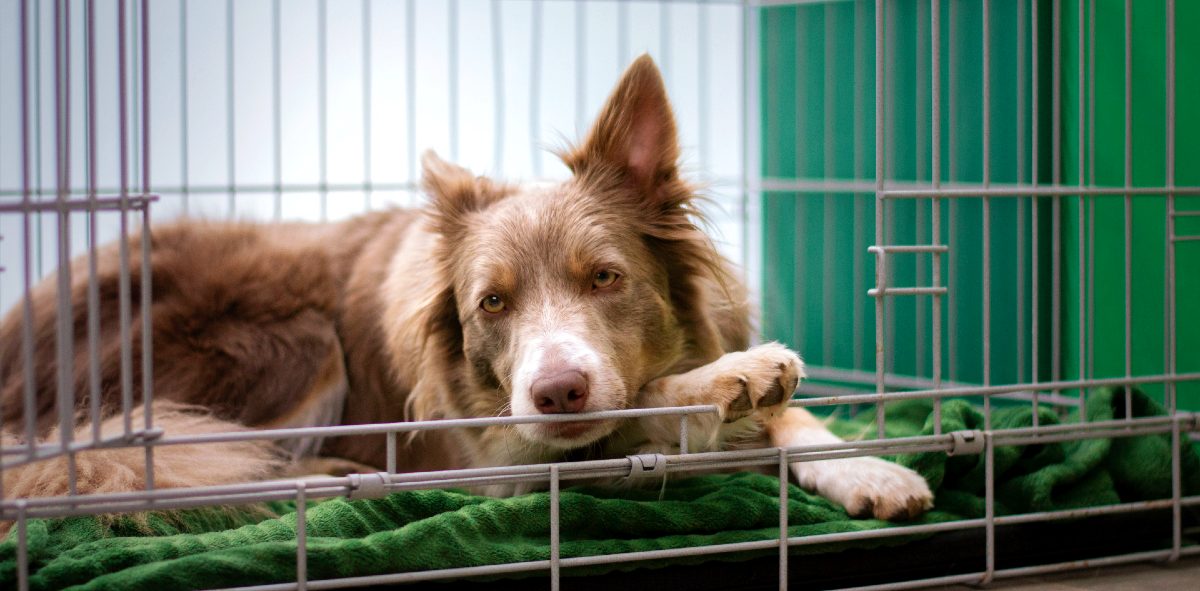
Emotional stress triggers physiological symptoms or what we see as anxiety– restlessness, panting, pacing, and the result of those stress behaviors– messes in the house, chewed slippers, and houseplant casualties.
Dogs and their cat counterparts are clearly shaped by their experiences as much as we are– and WE, us humans, have the biggest impact on them.
The more aware we are of just how much we impact their mental and emotional well-being, the more we can do to have a positive impact!
The Impact Humans Have on Animals
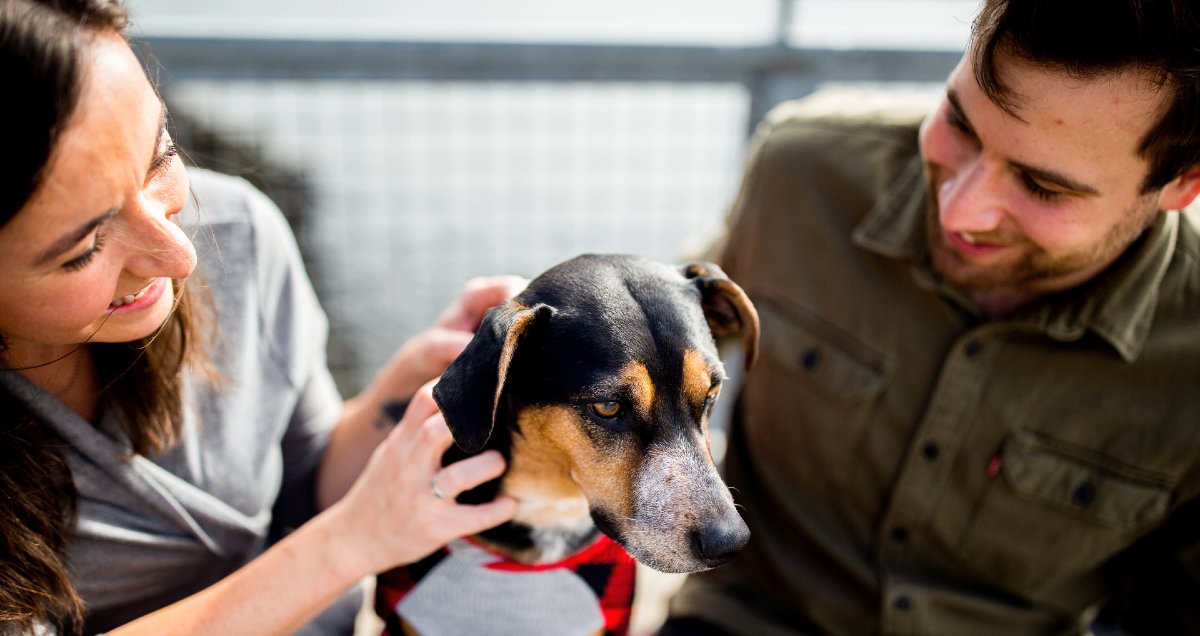
There’s a long list of studies to show how animals can help humans, how beneficial cats and dogs are to our mental, emotional, even physical health. Still, research exploring how we impact animals’ mental and emotional health is sparse.
One study did demonstrate that beta-endorphin, oxytocin, and dopamine markers increased in both humans and dogs when interacting– meaning that physiologically, time spent together benefits both species.
Studies like the above validate every pet lover’s obsession with their pup, but these are also just scratching the surface. Imagine the bond we could build if we listened more with our eyes to see what our pets want.
Giving Your Pet Choices
This concept of choice and consent can be extended to so many aspects of our day-to-day, but there are three big choices you can let your dog make starting today:
The choice to walk away
We decide almost everything for our pets. Not just what they eat, where they go, who they interact with, but we often initiate or stop play. We smother them with kisses whether they asked or not. Small dogs and cats have no say on being picked up (though they can and doth protest once they are).
We can be more cognizant of what they want and when and respect those boundaries – engaging when they want to play or giving them extra scratches when they want to be petted. It’s as simple as reading body language. Are they pulling away when you’re trying to bring them closer? Welp, they’re giving some clear cues.

The choice to go to a safe space
Whether it’s a crate, a bed, or a bedroom, every animal needs a designated safe space that they can retreat to when they choose.
Letting them walk away instead of forcing something onto them allows them to remove themselves from situations that can be stress-inducing– (a gaggle of well-intentioned but grabby girls comes to mind).
The choice to train or not
Giving a dog a job can be beneficial to their mental health– it’s actually proven. A Swedish study found that successful problem solving was more rewarding to dogs than just being handed a treat.
But it’s key to differentiate between asking a dog to work for food and making a dog work for food. This choice can solidify a positive experience or reinforce a negative.
At times, we’re all guilty of dismissing their consent or bulldozing their choice but the rump snoozing next to you is their own living, breathing individual with complex emotion and as fragile mental health as us.

It can be easy to take that for granted but imagine the depth of the connection you could form simply by listening to their wants and needs.
Helping Them Be Their Best Pet
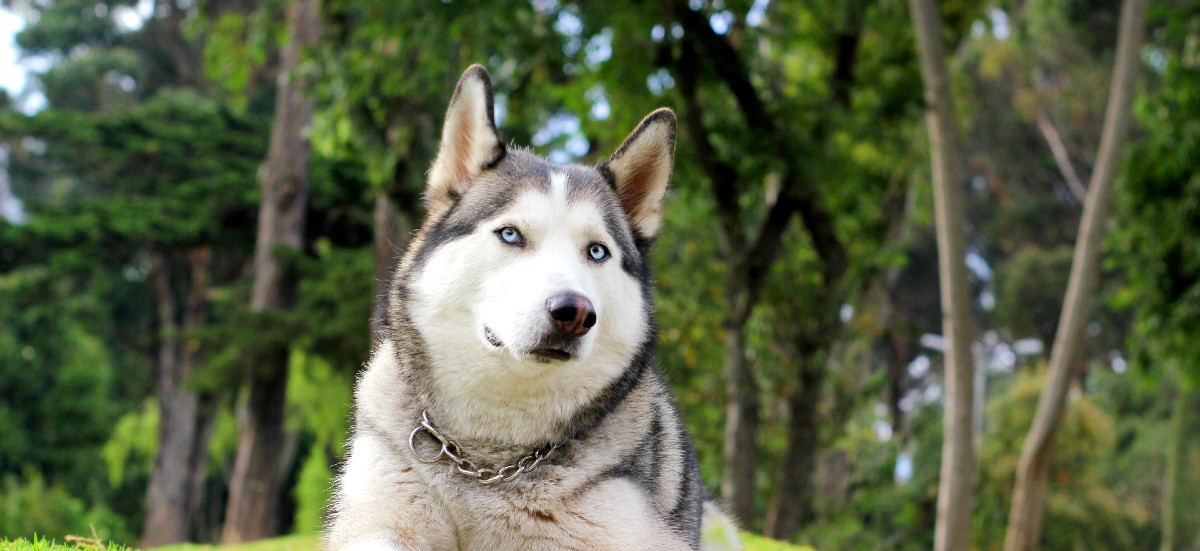
Raising a dog or cat, caring for them is more than just food in the bowl and skin and coat support (though we ain’t knockin’ it). It’s a relationship– a two-way street.
You and your four-legger have this tremendous opportunity to build on that relationship. Bonding is all about acknowledging them as an individual, it’s born out of mutual respect, and it starts by being more aware.

That’s why we’re headed deeper into the fray in the weeks to come. Communicating better, understanding your pet’s needs, strengthening your bond between your ride-or-die, just think of the dopamine levels for two-legger and four-legger alike!
The best part? It’s FREE. And you can start right now. Like now. Put the phone down (in a few sentences), and start by paying more attention to the tail-wags and body language.
Give them choice– let them linger on the walk and sniff just a bit longer. Go to the store and have them pick their new toy. Take a beat and consider how your actions may be affecting their mental and emotional wellbeing day-to-day, and make changes if need be. Do that, and you are making such a difference for your dog or cat already and for yourself, too.
Share this Post
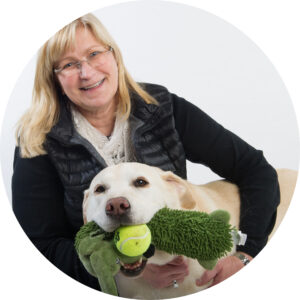
Dr. Chris Besent
Chris Bessent, DVM, MSOM, Dipl. OM, L.Ac. has over thirty years of experience in veterinary medicine including certificates in veterinary acupuncture, veterinary chiropractic and veterinary Chinese herbology. Imbued with Eastern philosophy and the knowledge that food is the foundation of health, Dr. Bessent also received her degree in veterinary nutrition and began to formulate recipes fit for a carnivore from nothing but whole foods. Currently, she divides her time between the Simple Food Project and Herbsmith, both of which are owned and operated out of her facilities in southeastern Wisconsin.

Kayla - Editor
Kayla is the Content Editor for Herbsmith. She has a cat named Professor Cat-Faced Meowmers, who goes by Kitty, and a goof of a dog, named Duck. She stays busy biking trails, playing board games, and searching for the next best craft beer.


